Why Two Streets Named Washington?
The great street name purge of 1920s left in place the duplication of Washington names.
Both of Milwaukee’s streets named for George Washington escaped what might be called the Great Duplicate Street Name Purge of a century ago. At the time there were dozens of streets with the same names, which created difficulties for visitors, letter carriers, delivery people and residents in reaching their destinations. It was also considered a safety issue because fire and police personnel might go to the wrong street, slowing response time.
In 1913, a commission was appointed to study the problem. The committee’s recommendations were met with so much resistance from the public that nothing was done. In 1921 another commission was appointed with the same results. Frustrated, Mayor Daniel Hoan told the City Engineer to draw up a plan. Against the wishes of many residents and business people, his proposed changes were accepted.
So, in the mid-1920s, duplicate street names began to be eliminated. Chicago Road on the South Side became Whitnall Avenue because it had the same name as the Third Ward’s Chicago Street. Highland Place on the Lower East Side became Land Place and Highland Avenue in Bay View was changed to Hillcrest Avenue, while Highland Boulevard kept its name.
The city was brutal in its efforts as dozens more street names were axed because they sounded too much like the names of other streets. Allen Street was changed because it was similar to Ellen Street. Becker Avenue could be confused with Becher Street, so it had to go. Bolton Street could not remain in existence with so many letters in common with Holton Street. In one extreme example, a tiny one-block-long alley along the railroad tracks in the Riverwest neighborhood, known as Forest Place, was reduced to Bush Lane, because of the fear of confusing it with the South Side arterial, Forest Home Avenue.
But Washington Street, in Walker’s Point, and Washington Boulevard, on the West Side, survived the house-cleaning, contrary to the wishes of the City Engineer. Washington Street was older and longer than Washington Boulevard, so the official recommendation was that Washington Street keep its name, but that Washington Boulevard be renamed Walnut Boulevard because Walnut Street was in line with it to the east.
Washington Street was indeed the older of the two streets. It was named in 1838 as part of “Milwaukee Proper,” as the optimistic investors called their future village. But lawsuits involving ownership of the land retarded its development for several years while Kilbourntown, on the west side of the Milwaukee River, and Juneautown, on the east side, both progressed. By the time the ownership question was settled, Walker’s Point was well behind the other two villages and no one would ever consider it “Milwaukee Proper.”
Washington Boulevard was named in 1906 as part of an upscale new development. It ran from the west edge of Washington Park, which housed the zoo, to N. 60th Street and was lined with expensive homes. At three-quarters of a mile, it was only half as long as Washington Street, but with influential residents like William Harley and William Davidson of Harley-Davidson motorcycle fame, and Alvin Kletzsch, for whom Kletzsch Park was named, changing the boulevard’s name was not going to happen.
The contrast with E. Washington Street is stark. A scrapyard is located at its eastern terminus, and on the day that I was there taking pictures, there was an unpleasant olfactory onslaught from the sewage treatment plant across the inner harbor. Several blocks to the west, beyond the industrial section, there is a significant aesthetic improvement. The smells are gone and the small homes and cottages in the residential area that extends to S. 20th Street are much more pleasing to the eye.
Two streets named for another president, Ulysses S. Grant — W. Grant Street and N. Grant Boulevard — were the other exceptions to the duplicate street name prohibition. Other duplicates have developed since the City Engineer’s report. We now have Layton Boulevard and Layton Avenue, Park Place on the East Side and Park Place on the Northwest Side, as well as the trifecta of Lincoln Avenue, Lincoln Memorial Drive and Lincoln Parkway.
Along Washington Boulevard and Washington Street
Carl Baehr is the author of Milwaukee Streets: The Stories Behind Their Names and the soon to be published From the Emerald Isle to the Cream City: A History of the Irish in Milwaukee.
If you think stories like this are important, become a member of Urban Milwaukee and help support real independent journalism. Plus you get some cool added benefits, all detailed here.
City Streets
-
The Curious History of Cathedral Square
 Sep 7th, 2021 by Carl Baehr
Sep 7th, 2021 by Carl Baehr
-
Gordon Place is Rich with Milwaukee History
 May 25th, 2021 by Carl Baehr
May 25th, 2021 by Carl Baehr
-
11 Short Streets With Curious Names
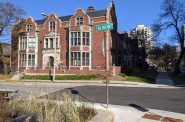 Nov 17th, 2020 by Carl Baehr
Nov 17th, 2020 by Carl Baehr


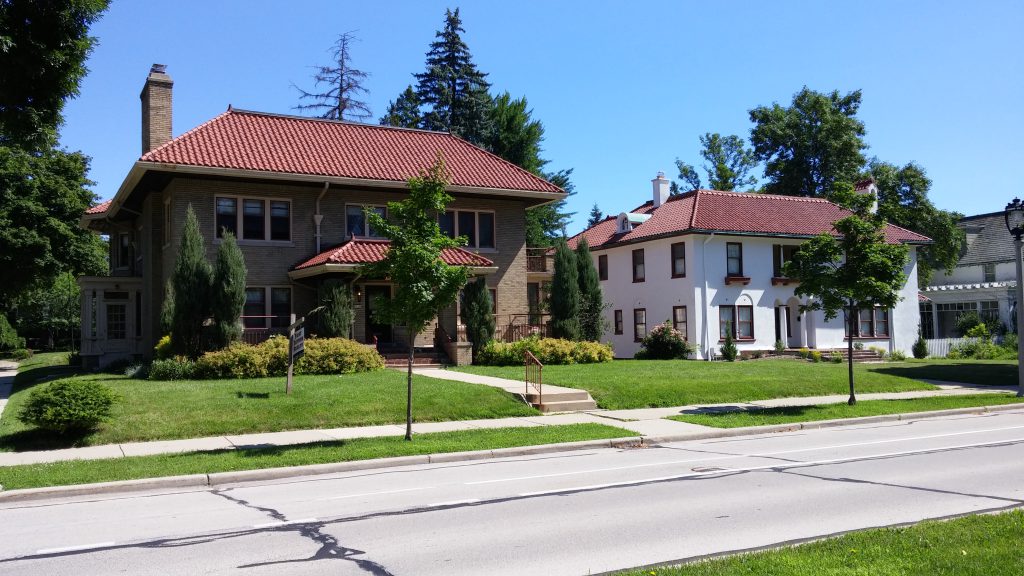
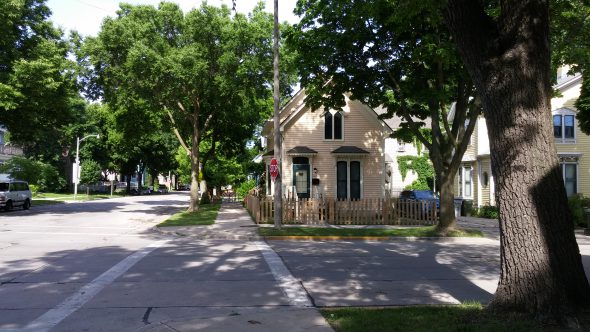
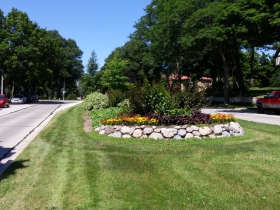
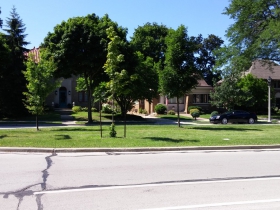
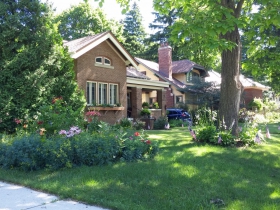
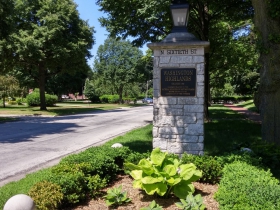
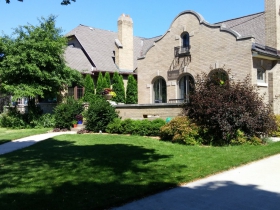
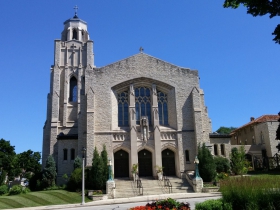
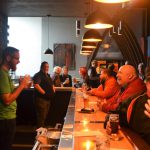
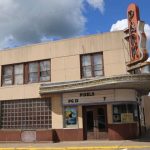

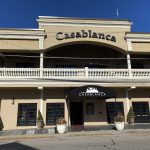














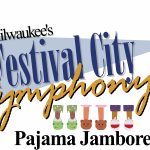

You don’t mention the two Pierce streets, but given their locations, I would assume both predate the drive to eliminate duplicates. Were they also spared?
W. Pierce Street on the South Side and N. Pierce Street in Riverwest?
Steve, you are correct. West Pierce was named in 1853 for Franklin Pierce who was elected president the previous year. North Pierce was named in 1857 for developer Jonathan Pierce. Strangely, the city engineer’s recommendations did not mention the Pierce streets.
I was standing on Humboldt and North one evening, and a “lost couple” drove up and asked how to get to Humboldt Park.
I wanted to laugh, but i kept my composure.
Or the two Arlington’s on the Eastside. One going South and one going North. If you don’t know there are two and what is on each, you can easily get lost. I have had to show many people the way to where they are going.
@Mark, I met some German tourists at the lakefront who were looking for Lakefront Brewery.
@Lee, The two Arlingtons are the same street, just out of alignment at Brady Street. It can be confusing.
The City of Boston, 2where I lived for 37 years, has at least fourWashington Streets within its corporate limits–Washington Street, which runs from downtown south-southwestward to the city limits; North Washington Street, which is separate from the aforementioned street; Washington Street Brighton several miles to the west of downtown, and Washington Street Dorchester, several miles to the south of downtown. This does not include Boston’s many suburbs. Similarly, there are several Beacon Streets around the city. Bostonians had a tendency to name many streets in city and suburbs South Street and Winter Street, in the fashion of the early colonists. Confusing to all but long-time Bostonians, who used to say that “if you don’t know wheah you ah, you shouldn’t be heah!”
I’ve often wondered if out-of-towners get confused by Clybourn and Kilbourn.
I was walking near the Marcus Center some years ago, and a confused couple asked which building was the Marcus. They were dressed in Harley gear, so after asking who they were going to see, I figured out they wanted the Marcus Ampitheater, nor the Performing Arts venue.